Related Research Articles
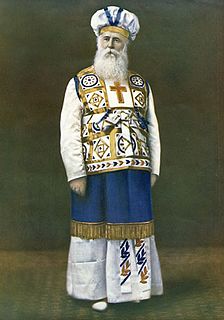
John Alexander Dowie was a Scottish-Australian minister known as an evangelist and faith healer. He began his career as a conventional minister in South Australia. After becoming an evangelist and faith healer, he immigrated with his family to the United States in 1888, first settling in San Francisco, where he expanded his faith healing into a mail order business. He moved to Chicago in time to take advantage of the crowds attracted to the 1893 World's Fair. After developing a huge faith healing business in Chicago, with multiple homes and businesses, including a publishing house, to keep his thousands of followers, he bought an expansive amount of land north of the city to set up a private community.
Christ Community Church in Zion, Illinois, formerly the Christian Catholic Church or Christian Catholic Apostolic Church, is an evangelical non-denominational church founded in 1896 by John Alexander Dowie. The city of Zion was founded by Dowie as a religious community to establish a society on the principles of the Kingdom of God. Members are sometimes called Zionites.
The following lists events that happened during 1931 in South Africa.
Zionist churches are a group of Christian denominations that derive from the Christian Catholic Apostolic Church, which was founded by John Alexander Dowie in Zion, Illinois, at the end of the 19th century. Missionaries from the church came to South Africa in 1904 and among their first recruits were Pieter Louis le Roux and Daniel Nkonyane of Wakkerstroom who continued to evangelize after the Zionist missionaries left in 1908.
An African-initiated church (AIC) is a Christian church independently started in Africa by Africans rather than chiefly by missionaries from another continent.
The Zion Christian Church (ZCC) is one of the largest African-initiated churches operating across Southern Africa. The church's headquarters are at Zion City Moria in Limpopo Province, South Africa.
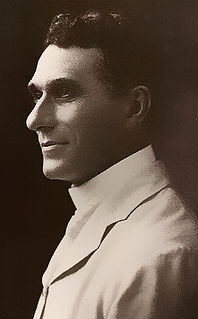
John Graham Lake was a Canadian-American leader in the Pentecostal movement that began in the early 20th century, and is known as a faith healer, missionary, and with Thomas Hezmalhalch, co-founder of the Apostolic Faith Mission of South Africa. Through his 1908–19 African missionary work, Lake played a decisive role in the spread of Pentecostalism in South Africa, the most successful southern African religious movement of the 20th century. After completing his missionary work in Africa, Lake evangelized for 20 years, primarily along the west coast of the United States setting up "healing rooms" and healing campaigns, and establishing churches. Lake was influenced by the healing ministry of John Alexander Dowie and the ministry of Charles Parham.
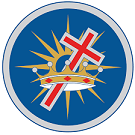
The Apostolic Faith Mission of South Africa (AFM) is a classical Pentecostal Christian denomination in South Africa. With 1.2 million adherents, it is South Africa's largest Pentecostal church and the fifth largest religious grouping in South Africa representing 7.6 percent of the population. Dr. Isak Burger has led the AFM as president since 1996 when the white and black branches of the church were united. It is a member of the Apostolic Faith Mission International, a fellowship of 23 AFM national churches. It is also a member of the South African Council of Churches.
The Diocese of Pretoria is a diocese of the Anglican Church of Southern Africa. It is divided into seven archdeaconries and has 61 parishes.
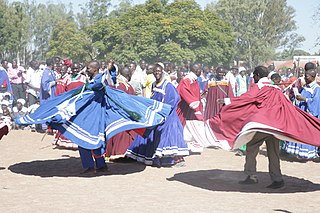
African Zionism, is a religious movement with 15–18 million members throughout Southern Africa, making it the largest religious movement in the region. It is a combination of Christianity and African traditional religion. Zionism is the predominant religion of Eswatini and forty percent of Swazis consider themselves Zionist. It is also common among Zulus in South Africa. The amaZioni are found in South Africa, Eswatini, Mozambique, Malawi, Zimbabwe, Botswana, and Namibia.
Modderpoort, also known as Lekhalong la Bo Tau or ‘The Pass of the Lions’, is the site in the eastern Free State, South Africa, where the Anglican Missionary Brotherhood, the Brotherhood of St Augustine of Hippo, was established by Bishop Edward Twells in the late 1860s. It is also associated with the BaSotho prophetess Mantsopa, while the ‘sacred landscape’ in the vicinity includes San rock painting sites.

Christianity is the largest religion practiced in Zimbabwe, accounted for more than 84% of the population. The arrival of Christianity dates back to the 16th century by Portuguese missionaries such as Fr. Gonsalo Da Silveira of the Roman Catholic Church. Christianity is embraced by the majority of the population. It is estimated 85 percent of Zimbabweans claim to be Christians, with approximately 62 percent regularly attending church services. Christian faith plays a very important role in the organization of Zimbabwean society.
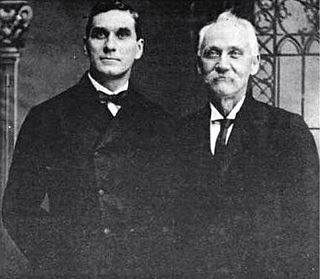
Thomas Hezmalhalch, usually known as Tom Hezmalhalch, was an American missionary, who together with John G. Lake founded the Apostolic Faith Mission of South Africa and was its first chairman and president. He was influenced by the healing ministry of John Alexander Dowie.
Pieter Louis Le Roux or PL Le Roux (1865–1943) was a South African missionary, who was a leading figure in the Zion Church movement in South Africa and the Apostolic Faith Mission of South Africa. Le Roux was initially a missionary for the Dutch Reformed Church. He was heavily influenced by the healing ministry of John Alexander Dowie and his Zionist movement which he later joined. Later he joined the Pentecostal movement of John G. Lake and Thomas Hezmalhalch. He was president of the Apostolic Faith Mission of South Africa from 1913 to 1942. His involvement with black leaders in South Africa led to the establishment of a conglomerate of churches from both Zionist and Pentecostal backgrounds, most notably the Zion Christian Church (ZCC).
Silwerkrans is a village in Bojanala District Municipality in the North West province of South Africa. The village is occupied by the Batlokwa ba ga Bogatsu community. The Batlokwa are thought to have occupied this village around 1820. Kgosi (Chief) Bernard Labius Mokalake Ipuseng Motsatsi of the village passed 13 September 2012. The village Tribal Athourity has still not appointed and inaugurated a new Kgosi for the village. His death was preceded by that of his brother Gabonewe William Motsatsi. Kgosi Motsatsi has a son who has been touted as his successor but to date he has not taken over from his late father. Tlokweng village has different sub-clans (makgotla) and amongst them the following; BaTlokwa ba ga Tlholoe, ba ga Kgaswane, kwa Masiana, ba kwa Mokgwa, ba kwa RaMoji, ba kwa RraMokgothu, ba kwa Monneng, ba kwa Siko, ba kwa RraSennelo, ba kwa RraMothibe, Bakolobeng ba ga Maloka and others.
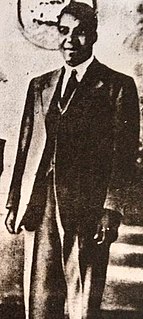
Engenas Barnabas Lekganyane was the founder of the Zion Christian Church (ZCC). He first formed the ZCC in 1924, and by the time of his death the church had at least 50,000 members. Under the leadership of his descendants the ZCC has gone on to have more than a million members primarily located in southern Africa. It is now by far the biggest of the various Zionist Christian sects that account for roughly half of all Christians in southern Africa.
Bishop Samuel Mutendi (c.1880-1976) was the founder of the Zimbabwean breakaway branch of the Zion Christian Church, which under his leadership grew to a membership of 250,000 at his death, and which is believed to be three times larger today and one of the largest religious organizations in the country. As the religious leader responsible for the popularization of Zionist Christianity into Zimbabwe, he is arguably the most influential religious personality in the country's history.
Pentecostalism began spreading in South Africa after William J. Seymour, of the Azusa Street mission, sent missionaries to convert and organize missions. By the 1990s, approximately 10% of the population of South Africa was Pentecostal. The largest denominations were the Apostolic Faith Mission, Assemblies of God, and the Full Gospel Church of God. Another 30% of the population was made up of mostly black Zionist and Apostolic churches, which comprise a majority of South Africa's African Instituted Churches(AICs). In a 2006 survey, 1 in 10 urban South Africans said they were Pentecostal, and 2 in 10 said they were charismatic. In total, renewalists comprised one-fourth of the South African urban population. A third of all protestants surveyed said that they were Pentecostal or charismatic, and one-third of all South African AIC members said they were charismatic.
Edward Lekganyane, popularly known as "Kgoshi Edward", was the leader of the Zion Christian Church (ZCC) from Easter Sunday, April 17, 1949, until his death eighteen years later. During this time he used his charisma and organizational abilities to expand the ZCC from about 50,000 to 600,000 members, while also reshaping numerous facets of the church. During his tenure as bishop, the ZCC emerged as South Africa's largest independent church, while Lekganyane became arguably the wealthiest and most powerful African in apartheid-era South Africa.
The Apostolic Faith Mission in Zimbabwe (AFM) is a classical Pentecostal Christian denomination in Zimbabwe. The AFM is one of the oldest Pentecostal movement is Zimbabwe with roots in the Azusa Street Revival, the Holiness Movement teachings of Andrew Murray and John Alexander Dowie.
References
- 1 2 Morton, Barry. "Samuel Mutendi's Biography Cannot Be True" – via www.academia.edu.
{{cite journal}}: Cite journal requires|journal=(help) - ↑ G Haliburton, "Edward Lion of Lesotho," Mohlomi I (1976): 65-6.
- ↑ M L Daneel, Old and New in Southern Shona Independent Churches. The Hague: Mouton, 1972, Volume I, 291-2.
- ↑ M L Martin, Biblical Concept of Messianism and Messianism in Southern Africa. Morija: Basuto Book Depot, 1964, 121.
- ↑ G Haliburton, "Edward Lion of Lesotho," Mohlomi 1 (1976): 66-8.
- ↑ C Murray, "The Father, the Son, and the Spirit: Resistance and Abuse in the Life of Solomon Lion, 1908-1987," Journal of Religion in Africa 29, 3 (1999): 349-50.
- ↑ Murray, "The Father, the Son and the Holy Spirit," 351.
- ↑ M. L. Daneel, Old and New in Southern Shona Independent Churches. The Hague: Mouton, 1971, Vol 1, 293.
- ↑ Daneel, Old and New, Vol 1, 290-2.
- ↑ "About Us". Archived from the original on 2019-07-07. Retrieved 2019-06-29.
- ↑ "About Us". zafmc.co.zw.
- ↑ "Zion church leaders Masuka, Mutendi are 'liars' — Court". September 29, 2014.